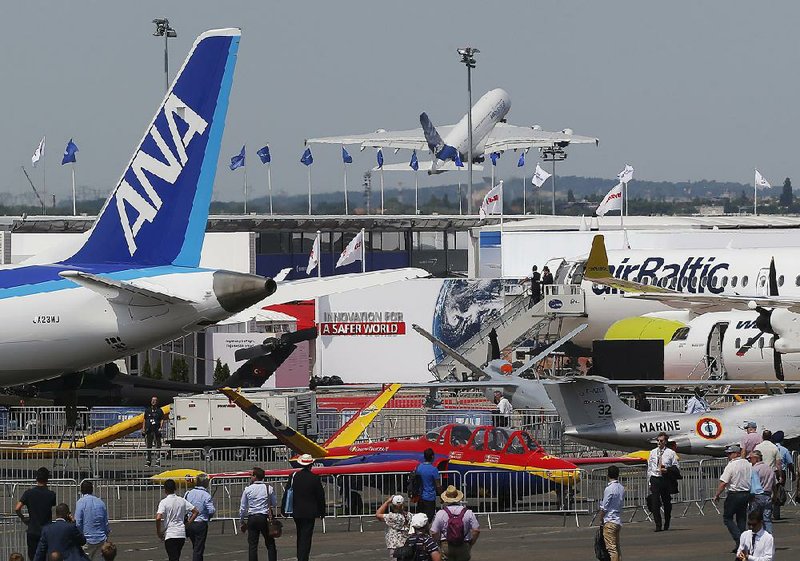PARIS -- Drones are no longer aviation's next big thing. They are a big thing right now, as evidenced by the drones of all shapes and sizes showcased at the Paris Air Show.
And their proliferation begs a vital question: How can the industry make sure that swarms of new flying machines don't endanger one another, other users of the skies and people on the ground as they do everything from patrolling traffic to even delivering your burger and fries?
In an Associated Press interview Tuesday at the Paris show, the head of the U.S. Federal Aviation Administration called the drone revolution "a huge game-changer" for the aviation industry, "similar to powered flight or jet engines."
"The growth of this industry and how it's evolving is something that all of us in aviation need to pay a lot of attention to," said Michael Huerta. As FAA administrator, he is responsible for the safety of the world's largest aerospace system and oversees a $16 billion budget and 47,000 employees.
One of the hurdles to growth is how to safely squeeze drones into already crowded commercial skies. The risk of drones crashing into commercial flights is apparent from previous near-misses. Twice in November and once in October, pilots flying Airbus A320 airliners into and out of London's Heathrow Airport reported drones flying so close that they could tell what color they were.
Huerta said the FAA wants to strike a balance between safety regulation and allowing the industry to keep innovating and developing.
"That means that there's a certain amount of figuring it out as we go along," he said.
A priority is first to establish exactly how many drones are in the skies at any one time and their precise locations, possibly by equipping them with technologies similar to the transponders aboard planes that show air traffic controllers and other planes where they are. Huerta said meetings that started in Washington this week will bring together industry people to agree on standards for what technology drones should use to identify themselves, what information they should broadcast and at what frequency.
"Identification is probably one of our highest priorities right now," he said.
Automated systems that could prevent drones from crashing into one another and other objects hold "great promise," he added. "At the same time, we have to have our fail-safes to ensure what happens when those systems don't work."
Industry analysts at Teal Group this month forecast that civilian drones will be the most dynamic growth sector in world aerospace for the next decade, with production soaring from $2.8 billion worldwide in 2017 to $11.8 billion in 2026.
It said the construction industry will lead the commercial market, with the 10 largest worldwide construction firms all already deploying or experimenting with drone systems. Huerta cited the example of a company that uses a drone to inspect smoke stacks, flying up to them, attaching itself to the structure and then climbing up it, taking photos as it goes.
Another measure of the industry's growth: In the 18 months since the FAA opened a registry for drones flown in the United States, it has already logged 850,000 of them.
The FAA's aircraft registry, in contrast, has 320,000 aircraft, Huerta said, and "it took us 100 years to get there."
Business on 06/21/2017

